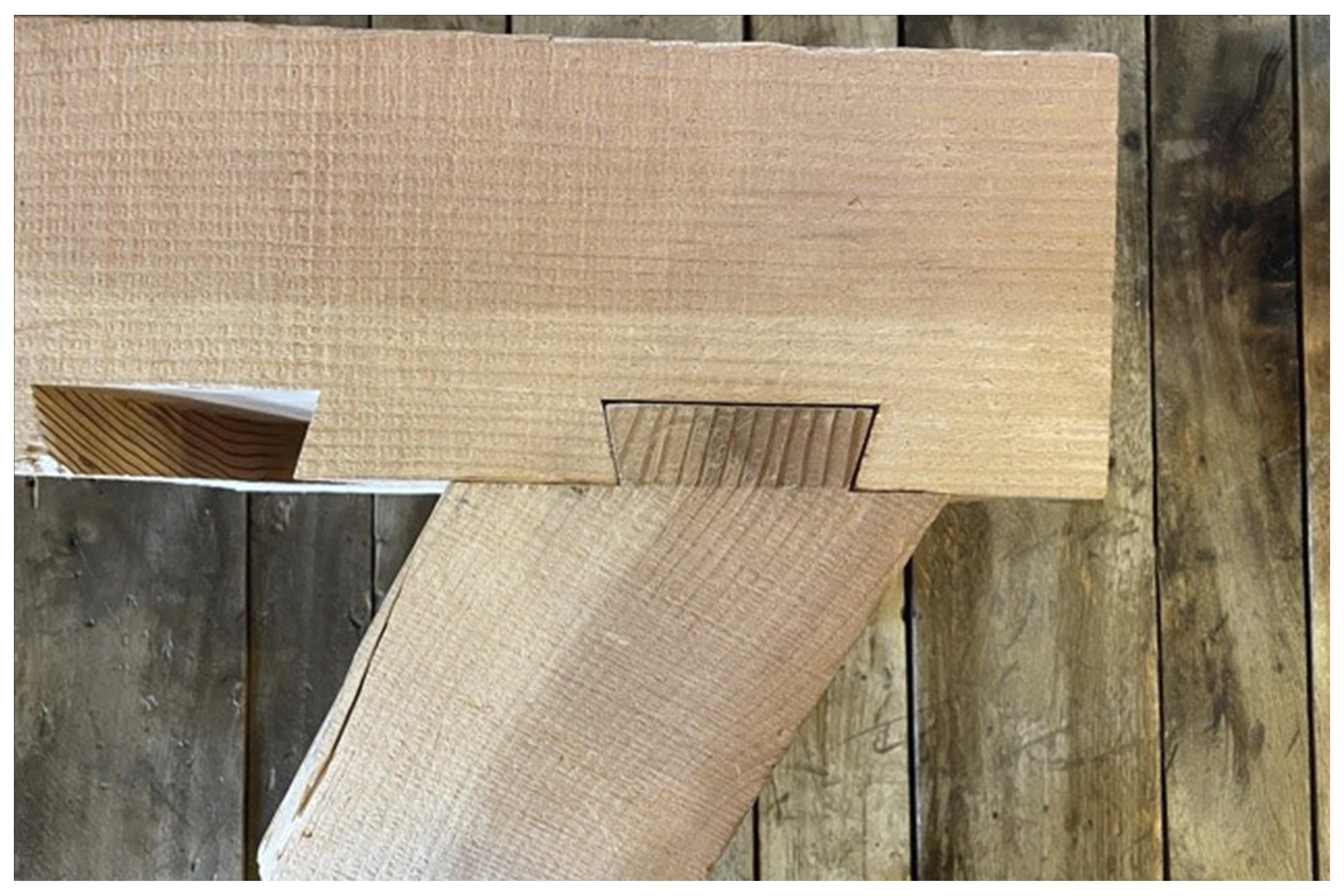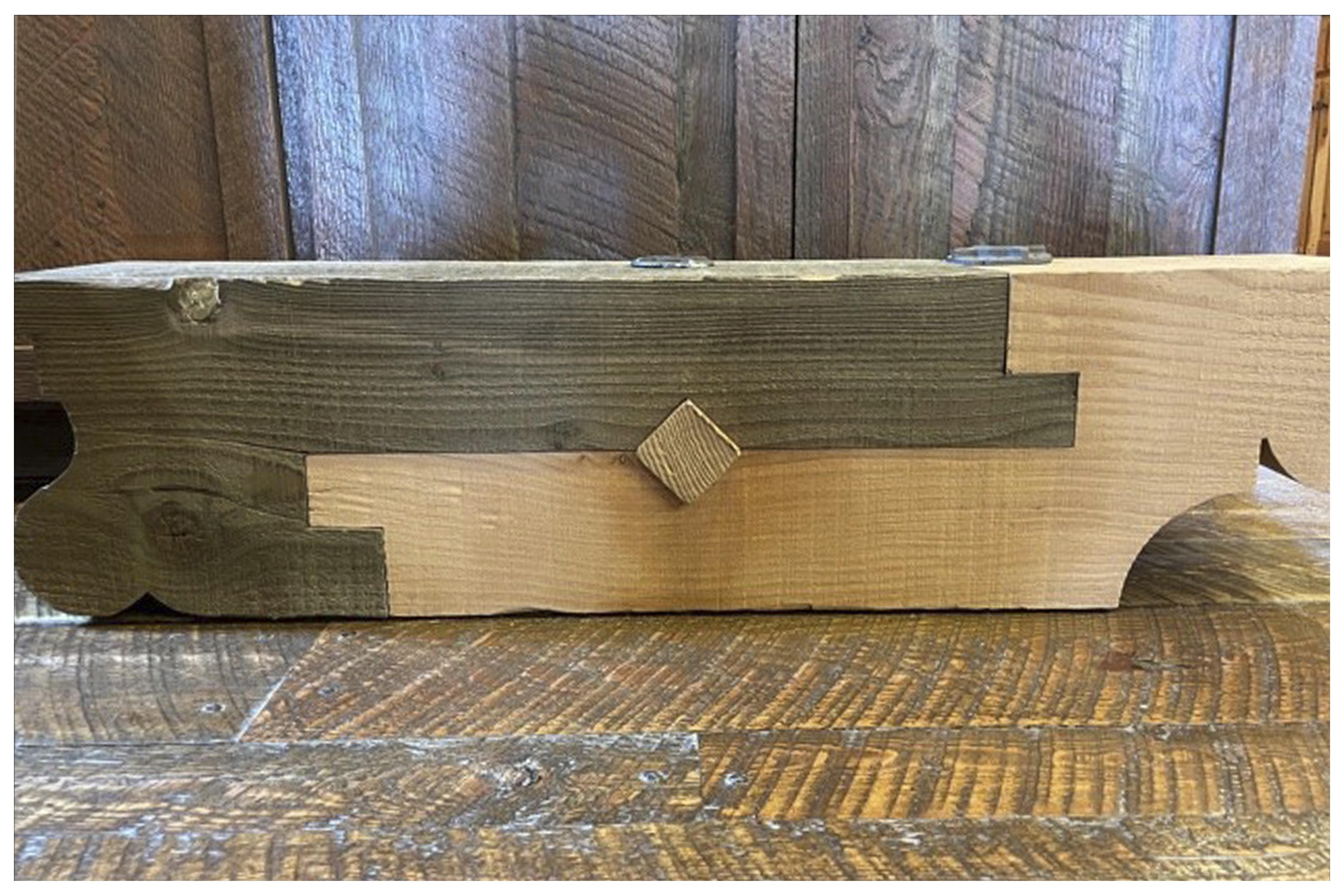
Timber framing is a unique type of construction where the wooden frame supports the entire weight of a building. While post and beam construction is similar in that it also creates a self-supporting structure, the type of joinery is what really sets timber framing apart from other types of construction. Timber framing connects timbers together using only wooden joinery, whereas post and beam construction often uses metal fasteners and connectors to join pieces together. Since timber framing is set apart by its intricate wooden joinery, we thought we'd go over some of the most common joints used in timber framing in this week's blog.
Mortise and Tenon
Mortise and tenon is one of the strongest and most common types of joinery used in timber framing. A mortise and tenon is formed so that the tenon, or the tongue, fits securely into the pocket, known as the mortise. This type of joinery is then secured together with wooden pegs that go through the mortise into the peg holes formed in the tenon.

Dovetail
A dovetail joint is another intricate and popular type of joinery. With a dovetail joint, the mortise and tenon take on a unique shape similar to that of a dove's tail.
While this joint differs from mortise and tenon because of its unique and complex shape, the basic concept remains the same, where the pins fit into interlocking tails, creating a very sturdy hold. Unlike the mortise and tenon, however, dovetail joints do not require dowels or pegs to secure the pieces together.
Tongue and Fork
The tongue and fork, also known as the bridle joint, is a common joint, similar to a basic mortise and tenon. However, the tongue and fork joint is unique because the mortise is left open on one side, and the tenon is cut to span the entire length of the mortise. It is then secured with a wooden peg to prevent movement. This type of joint is often used to connect rafters together since it is strong but not as refined-looking as a typical mortise and tenon since the end of the tenon remains visible.

Scarf Joint
Scarf joints, also known as splice joints, are used to join two pieces end to end to create a longer piece. A scarf joint is made by cutting alternating stops or notches in the ends of the two timbers and securing them together. These stops help to secure the pieces together and help limit any twisting that may occur. Scarf joints are often then secured with wooden pegs.
The unique wooden joinery used in timber framing is what sets this type of construction apart. The results are a robust and sturdy structure with intricate design details that enhance the natural beauty of the building.
At Marks Lumber, we offer expert timber framing advice and services, helping you create the home of your dreams. Contact Marks Lumber today to learn how to get started on designing a unique timber frame home.
Sources: https://www.vermonttimberworks...
